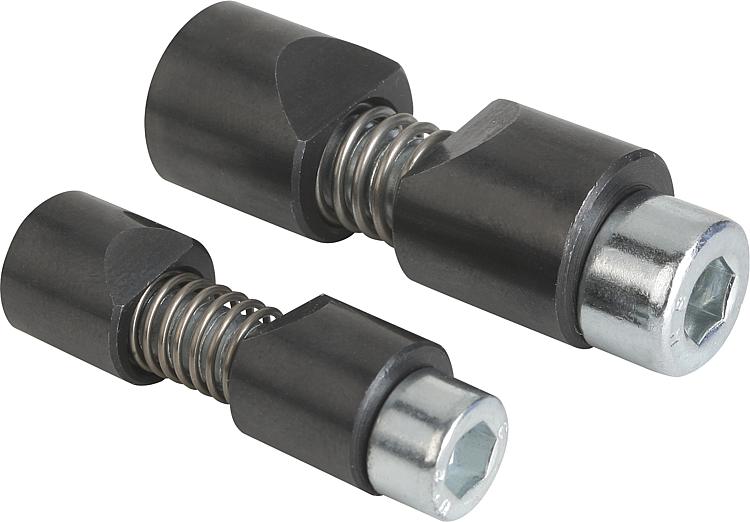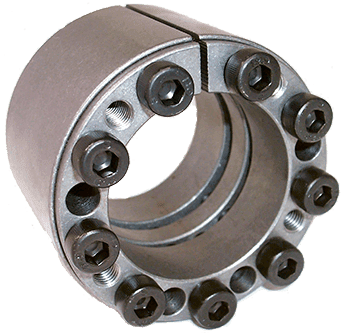Product Description
1.Materials & Relevant Standards
BODY: DUCTILE IRON GGG-50
GASKET: CZPT / NBR / SBR
BOLTS & NUTS: 6.8/8.8 Carbon Steel
COATING: EPOXY coating.
2.Pipe Materials
3.Drawing
| SIZE | FLANGE | OD |
| Dn | RANGE | |
| DN60 | 60 | 66-83 |
| DN80 | 60/80 | 88-105 |
| DN100 | 60/80/100 | 109-125 |
| DN125 | 60/80 | 136-159 |
| DN150 | 60/80/100 | 160-183 |
| DN175 | 60 | 191-219 |
| DN200 | 60/80/100/150 | 211-239 |
| DN225 | 60 | 241-254 |
| DN250 | 60/80/100/125/150/200 | 261-287 |
| DN300 | 60/80/100/125/150/200 | 313-344 |
| DN350 | 60/80/100/125/150/200 | 361-389 |
3.DrawingAbout Avannto
Shipments
Valve World Exhibition
FAQ
Dear Customers, the following questions are frequently asked by our customers, we put them as following, if you still have any questions haven’t been answered following, you can call our 24 hours telephone No. to get your quick answer.
1. What are your office hours?
You can reach us from 9:00 A. M. to 9:00 P. M. GTM+8, Monday to Friday, except weekends.
2. How soon can I get a price quote?
Once we know the Size, material, drive method we can provide you with 1 competitive price quote within 24 hours.
3. Can I get a sample?
Yes, the samples are free for you. But you need to offer 1 courier account NO. to afford the fee for samples shipping. The samples’ sending usually takes 5-7days.
4. How can my order produced by my brand?
Yes, you can. Pls offer your brand or LOGO design to us(.AI or.PSD format), then we could produce all goods with your brand or LOGO.
5. What’s your delivery time?
Except our legal holiday, it will take 2-4 weeks for us to finish all your orders’ production.
6. Is there a minimum order requirement?
Due to the high machine setup cost and shipping freight, our minimum order quantity is 5pcs
7. Do you have butterfly valve related accessories?
Yes, we have. We have accessories: pneumatic actuators, electric actuators, limit switches, solenoid valves, etc.
8. Will you match competitors’ prices?
If you find a lower price elsewhere for the exact same specification, we will meet or beat that price as long as it is a little higher than our cost price.
9. What are your terms of delivery?
We accept FOB, CIF etc. You can choose the 1 which is the most convenient or cost effective for you.
10. Where can I meet you by face to face?
A,Our headquarter is located in ZheJiang , if you travel to ZheJiang , you can visit our office at any time, we could pick you up from your location in ZheJiang and ZheJiang .
B,Our factories are located in ZheJiang and HangZhou, welcome to visit our factory before you cooperate with us.
C,We will attend China Spring Canton Fair and China Autumn Canton Fair every year, welcome to visit our booth at that time.
11. How can I be your sole agent in our country?
Welcome you to become our sole agent firstly. According to different countries’ demand, if your yearly purchase quantity from us can reach 10000 to 30000 pcs you could be our sole agent in your country. If you wanna know exact quantity requirement for each country, pls feel free to contact us at any time.
| After-sales Service: | ISO 2531/En545 |
|---|---|
| Warranty: | 20 Years |
| Standard: | ISO 2531/En545 |
| Technique: | Casting |
| Nominal Diameter: | DN60-DN350 |
| Type: | Socket Union |
| Samples: |
US$ 10/Piece
1 Piece(Min.Order) | |
|---|
| Customization: |
Available
| Customized Request |
|---|

Are there tutorials available on selecting the right split collar based on environmental conditions?
Yes, you can find tutorials and educational resources on selecting the right split collar based on environmental conditions. Choosing the appropriate split collar is crucial to ensure optimal performance in different environments. Here’s where to find tutorials and guidance:
- 1. Manufacturer Websites: Many split collar manufacturers provide resources on their websites, including selection guides. These guides often consider factors like temperature, humidity, and chemical exposure to help you choose the right collar for your specific environment.
- 2. Online Engineering Communities: Engineering forums and communities frequently discuss the selection of components, including split collars. You can ask questions and gather insights from experienced engineers regarding environmental considerations.
- 3. YouTube and Video Platforms: Video tutorials on platforms like YouTube can provide visual guidance on selecting split collars for specific environmental conditions. These videos may include real-world examples and case studies.
- 4. Technical Manuals and Guides: Manufacturers often include detailed technical manuals and guides with their products. These documents can provide in-depth information on selecting split collars based on environmental factors.
- 5. Industry Associations: Industry-specific associations and organizations may offer resources and publications that address the selection of components like split collars for particular environments, such as aerospace, marine, or food processing.
- 6. Online Retailers: Some online retailers provide selection tools and guidelines to help customers choose the right split collar based on environmental conditions. These tools often include filter options for material and environment type.
- 7. Engineering Schools and Institutions: Educational institutions may offer courses or seminars that cover component selection, including split collars, for various environments. Check with local universities or technical schools for educational resources.
- 8. Supplier Consultation: Contacting split collar suppliers directly can be a valuable resource. They can provide expert advice and recommendations based on your specific application and environmental challenges.
- 9. Online Articles and Blogs: Technical websites and engineering blogs may feature articles that discuss the selection of split collars in different environments. These articles often provide practical insights and tips.
- 10. Webinars and Seminars: Look for webinars and seminars conducted by industry experts and suppliers. These events may cover the selection process and considerations for split collars in varying environmental conditions.
When selecting split collars based on environmental conditions, consider factors such as temperature, moisture, chemicals, abrasion, and exposure to corrosive elements. It’s essential to choose collars that are compatible with the specific challenges your machinery or equipment will face in its operating environment.

What are the design considerations when utilizing split collars in machinery?
When using split collars in machinery, several design considerations are essential to ensure optimal performance and reliability. Here are key design considerations:
- 1. Shaft Material and Diameter: Select split collars compatible with the material and diameter of the shaft. Ensure a proper fit and consider any tolerances required for the application.
- 2. Collar Material: Choose the appropriate collar material based on factors such as corrosion resistance, temperature tolerance, and environmental conditions. Common materials include steel, aluminum, plastic, and stainless steel.
- 3. Collar Type: Determine whether a single-split, double-split, or triple-split collar is required based on the application’s holding power and torque requirements.
- 4. Fastening Method: Consider the fastening method, whether it’s set screws, clamping levers, or other mechanisms. Select the method that provides the necessary grip and ease of adjustment for your machinery.
- 5. Load and Torque: Calculate the anticipated loads and torque that the collar will need to withstand. Ensure the selected collar is rated to handle these forces without slippage or deformation.
- 6. Alignment and Precision: Proper alignment of split collars is crucial for accurate positioning of components on the shaft. Misalignment can result in uneven pressure and reduced performance.
- 7. Space Constraints: Assess space limitations and choose a split collar design that fits within the available space without interference with other components or machinery elements.
- 8. Environmental Conditions: Consider the operating environment, including temperature extremes, moisture, chemicals, and potential contaminants. Select collars with suitable coatings or materials to resist environmental factors.
- 9. Maintenance Access: Ensure that split collars can be easily accessed for maintenance and adjustments. Quick installation and removal are beneficial for reducing downtime during servicing.
- 10. Reusability: Determine whether the collars need to be reusable for frequent adjustments or if they are for one-time use. Reusable collars are designed for multiple installations and removals.
- 11. Industry Standards: Check if there are specific industry standards or regulations that apply to your machinery. Ensure that the chosen split collars meet these standards for safety and compliance.
- 12. Material Compatibility: Verify that the material of the split collar is compatible with the components it will contact on the shaft. Avoid materials that may cause galvanic corrosion or chemical reactions.
By carefully considering these design factors, you can select the right split collars for your machinery, ensuring they provide secure, precise, and reliable performance in your specific application.

What are the primary advantages of using split collars in mechanical assemblies?
Using split collars in mechanical assemblies offers several advantages that enhance their performance and ease of use. Here are the primary advantages:
- 1. Easy Installation and Removal: Split collars are designed with a break in the collar, allowing them to be easily installed or removed from a shaft without the need for complete disassembly of the equipment. This simplifies maintenance and reduces downtime.
- 2. Precise Positioning: Split collars provide precise positioning on a shaft. They can be adjusted to the desired location with accuracy, ensuring proper alignment of components such as bearings, sprockets, or pulleys.
- 3. Even Pressure Distribution: Split collars apply even pressure around the shaft, preventing localized stress and potential damage to the shaft. This uniform distribution of force reduces the risk of shaft wear or deformation.
- 4. Secure Locking Mechanism: Split collars often feature set screws or clamping mechanisms that create a secure and reliable hold on the shaft. This prevents slippage or movement during operation.
- 5. Reusability: Split collars are typically reusable, which is cost-effective in the long run. They can be removed, adjusted, and reinstalled multiple times without loss of performance or integrity.
- 6. Versatility: Split collars are available in various materials and sizes to accommodate different shaft dimensions and environmental conditions. This versatility makes them suitable for a wide range of applications.
- 7. Reduced Shaft Damage: The design of split collars minimizes the risk of shaft damage that can occur with other collar types, such as set-screw collars, which can mar or deform the shaft surface.
- 8. Minimal Assembly Space: Split collars do not require extra space beyond the length of the collar itself. This is advantageous in applications with limited assembly space or close proximity to other components.
- 9. Corrosion Resistance: Split collars can be manufactured from materials with corrosion-resistant properties, making them suitable for use in various environments, including outdoor and marine applications.
- 10. Maintenance Efficiency: Split collars simplify maintenance tasks by allowing quick access to the shaft. When maintenance or replacement is needed, the collar can be easily disassembled and reassembled.
The advantages of using split collars make them a popular choice in mechanical assemblies where precision, ease of installation, and maintenance are essential. These collars offer reliability and flexibility in a wide range of applications.


editor by CX 2023-12-13